As he soon becomes a third-generation plating company owner, Matt Fodge knows the odds are stacked against him.
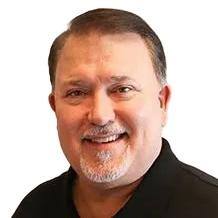 Jeff Fodge“According to statistics, I'm the guy that's going to come in and just ruin everything,” says Fodge, the Vice President at Gleco Plating, which has two locations in Texas in Rowlett and McAllen.
Jeff Fodge“According to statistics, I'm the guy that's going to come in and just ruin everything,” says Fodge, the Vice President at Gleco Plating, which has two locations in Texas in Rowlett and McAllen.
Of course, statistics often lie. In this case, it was based on a now-debunked study from the 1980s, which reported that less than 13% of third-generation businesses survive. A later study by Harvard suggests that, on average, family businesses last far longer than typical companies.
“I want to do whatever possible to make sure that I wasn't part of that statistic,” says Fodge, whose father, Jeff, is the company's current president and is eyeing an impending retirement soon. “Coming from a sports background, I'm very competitive, and my goal is to grow this thing, start looking into culture, and get the right people for your company.”
Continued Work in Improving Customer Service
 Matt FodgeIt’s a philosophy that Jeff has instilled in his son, which means it is all about customer service in the finishing and coating industry.
Matt FodgeIt’s a philosophy that Jeff has instilled in his son, which means it is all about customer service in the finishing and coating industry.
“For us, it’s not enough to provide a quality finish,” Jeff says. “We are determined to go the extra mile by adding to our transportation fleet, providing extra training to our customer service department, and striving to provide a ‘real-time’ response to requests.”
Gleco provides zinc, anodize, chromate, bright nickel, tin, silver, gold, and copper finishes to the automotive, defense, sheet metal, metal machining, and telecommunications industries.
Their main facility is in Rowlett, about 15 miles east of Dallas, which they moved into in 1983. Glen Gurley and his wife, Jean, started the company in 1979 in nearby Garland.
“We started way out in the country, and now the city is around us,” says Jeff, who married Glen’s daughter and soon went to work for his son-in-law. We started in an 8,000-square-foot building, and we've expanded over the years to about 51,000 square feet, plus we've got another building that is over 10,000 square feet.”
“We got caught in the early 2000s with being heavily into just one industry,” Matt says. “Since that crash, we learned our lesson and always try to diversify.”
The Rowlett location has about 85 employees, and the heart of their business is zinc plating, rack, and barrel.
Gleco’s second location is 500 miles south in McAllen, across the border from Reynosa, Mexico. It has about the same number of employees, bringing its total to almost 160.
Mirrored Processes at Both Facilities
 Gleco provides zinc, anodize, chromate, bright nickel, tin, silver, gold, and copper finishes to the automotive, defense, sheet metal, metal machining, and telecommunications industries.‘Strategically, we have the same processes at each place, so we can offer our customers a true contingency plan in case anything were to happen,” Matt says. “And we've done that before where we had to transfer work from the Rowlett facility down to McAllen, and we didn't miss a beat. We did that intentionally, and we have the same processes, tank sizes, and pretty much the same chemicals at each place.”
Gleco provides zinc, anodize, chromate, bright nickel, tin, silver, gold, and copper finishes to the automotive, defense, sheet metal, metal machining, and telecommunications industries.‘Strategically, we have the same processes at each place, so we can offer our customers a true contingency plan in case anything were to happen,” Matt says. “And we've done that before where we had to transfer work from the Rowlett facility down to McAllen, and we didn't miss a beat. We did that intentionally, and we have the same processes, tank sizes, and pretty much the same chemicals at each place.”
Jeff says that since they opened the McAllen location in 2019, they have worked on their in-house systems and management programs to mirror each facility.
“Even to this day, we are still working to make sure that every report we produce and every piece of documentation we provide are exactly alike,” he says. “The thing that we found is we have unique talents at each facility, and we've tried to take the best at each facility and merge them into one management system so you would never know if you were getting a part plated in Rowlett or you were getting a part plated in McAllen, it's not going to make a bit of difference to our customer. And so I think we've made some great strides in that.”
“Customers will always tell you they want the best price possible, but at the end of the day, they want a part that's on time, good quality, and a plating partner that they can rely on.”
Matt says that automotive is the largest industry they serve, followed closely by aerospace, gas, telecom, and medical. He says Texas has such a diverse industry base —one growing exponentially every year as more companies move to the business-friendly state — that it makes sense to be ready to serve these large clients.
It is also a lesson they learned several years ago when they focused too heavily on the telecom industry.
“We got caught in the early 2000s with being heavily into just one industry,” Matt says. “Since that crash, we learned our lesson and always try to diversify.”
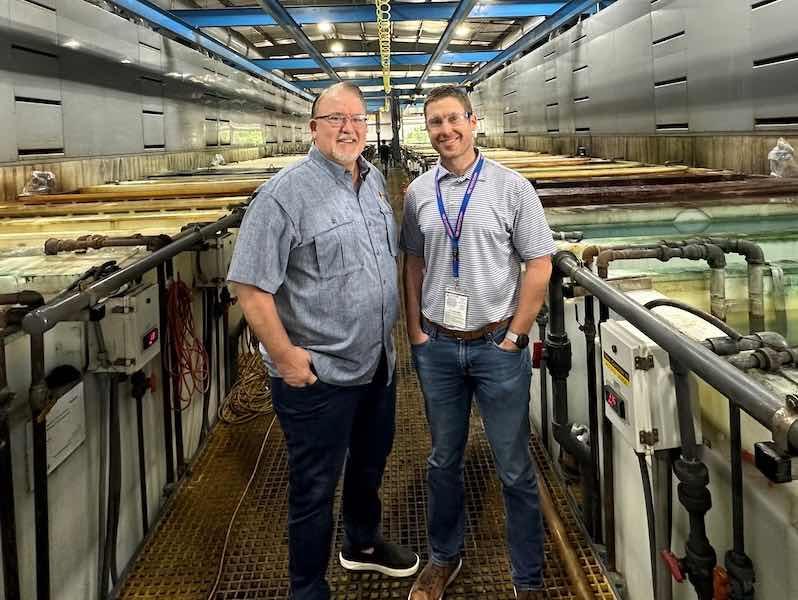 Jeff and Matt Fodge
Jeff and Matt Fodge
Automating the Business Operations
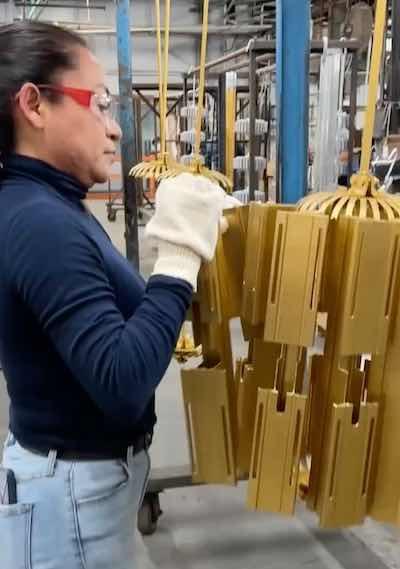 Since joining the company, Matt has worked to automate business operations, including trying to go paperless in his work projects and accounting. They have used bar codes on projects to track where they are in the process and inform customers of the status of their parts.
Since joining the company, Matt has worked to automate business operations, including trying to go paperless in his work projects and accounting. They have used bar codes on projects to track where they are in the process and inform customers of the status of their parts.
It is all part of the effort to improve customer service and deliver quality parts to customers, a mantra they have ingrained in all of their teams at both locations.
“Over the last several years, we tried to use technology to our advantage by going paperless and incorporating a barcode scanning system to track jobs better and update our customers quicker,” Matt says. “We look at quality first and foremost to ensure that we provide a quality part every time. But then there is also our on-time delivery and customer responsiveness. It’s all about having a good ERP system and a good team that follows procedures and is knowledgeable about it. That has allowed us to go above and beyond.”
He adds, “Customers will always tell you they want the best price possible, but at the end of the day, they want a part that's on time, good quality, and a plating partner that they can rely on.”
Jeff agrees that the key to making good business decisions is having the right information at your fingertips. He says the investment in a quality ERP system helped make that much easier.
“Employees shouldn’t have to chase people down to find vital, time-sensitive information,” he says. With the appropriate ERP system, decision-makers can more easily work between accounting and production functions to provide employees with the right information to make the right decisions. With multiple departments, it is critical that information is able to be cross-shared and that everyone is on the same page, including your customers.”
Thinking Outside the Box on Attracting Higher-Level Customers
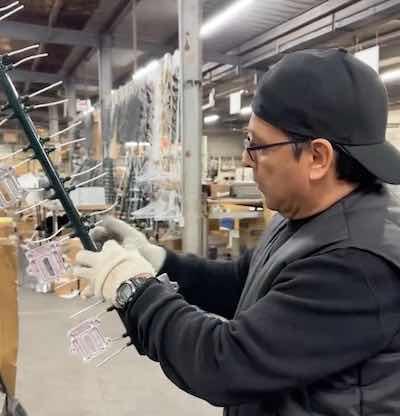 Jeff says about three years ago, Gleco decided to put a new management operating system in place that “caused all of us to think outside the box” as the company began to diversify its customer base even more and also look at how to attract the type of customers that would be a better fit for them, as well as return better margins.
Jeff says about three years ago, Gleco decided to put a new management operating system in place that “caused all of us to think outside the box” as the company began to diversify its customer base even more and also look at how to attract the type of customers that would be a better fit for them, as well as return better margins.
Jeff says they became more selective about which manufacturers they took on as customers and looked at those who offered the possibility of a longer-term relationship.
“I don't mean this in a derogatory way to any of our customers, but we wanted to work with a higher-quality customer,” he says. "What I mean by that is it will take a lot longer to get into our company to work with us, but once in, it will be that much harder for you to be taken out. You literally have to just fall on your face.”
The Gleco management team brainstormed ideas on what type of customer they wanted to engage—or, as Jeff called it, “the perfect customer”—and came up with a short criteria of three or four items that they would look for.
With that customer description on paper, all of their sales efforts went into finding customers who fit the criteria that they wanted to work with and, more importantly, grow with. That practice was one reason Gleco became interested in getting more certifications to attract customers in the aerospace sector.
“Production capacity is limited, and good employees are scarce,” Jeff says. “We must focus our time and attention on a certain type of customer that uniquely fits what we do.”
“They've got very high expectations versus the customer that you call on them, give them a good price, and the next day, you're plating for them,” Jeff says. “That is great, but you could also be losing that work the next day if you're not the flavor of the week. We all need customers like that, but we also all need base customers who will be partners through thick and thin. We put a lot of time and money into developing customers like that.”
Taking a “Less Is More” Philosophy to Customers
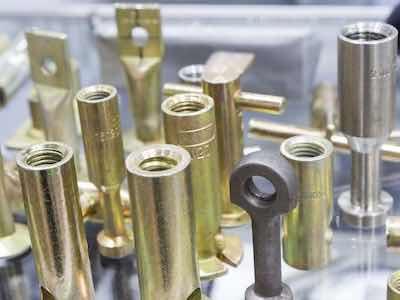 Like many plating operations these days—and specifically many that took on numerous additional customers during tough economic times just to get the work—Gleco has now taken the approach that they can not be everything to everybody when it comes to finishing parts.
Like many plating operations these days—and specifically many that took on numerous additional customers during tough economic times just to get the work—Gleco has now taken the approach that they can not be everything to everybody when it comes to finishing parts.
Gleco has taken a “less is more” philosophy in the past two years, especially since they studied their financial data and learned that most of our income/profits come from about 20% of its customers. By developing an in-depth customer rating system that will help them determine which type of customer they want to commit their available production capacity towards, they have begun to reap those benefits.
“Production capacity is limited, and good employees are scarce,” Jeff says. “We must focus our time and attention on a certain type of customer that uniquely fits what we do.”
Likewise, Matt says they have tactfully eliminated some customers whose margins and work volume did not fit into Gleco's defined customer criteria.
“When we look up at the end of the year, and we've got 250 to 300 active customers, for the number of people we have, we can't do that good of a job for every company,” Matt says. We never got into a situation where we were calling a customer and saying, ‘We're not going to do business anymore,’ because that's not how we would want to be treated as well.”
Instead, he says they tried to offer everyone a solution; for some, the solution they offered worked out, and for others, it didn't.
“It's a tough conversation to have sometimes,” Matt says. “But ultimately, we want to be able to provide solutions to our customers that work for them, and they're satisfied.”
Stronger and More Flexible Company
 Teamwork is a big part of Gleco Platings culture.Jeff says that putting his management team through those various exercises over the past two to three years has made Gleco much stronger and also made them more flexible when new customers come on the horizon.
Teamwork is a big part of Gleco Platings culture.Jeff says that putting his management team through those various exercises over the past two to three years has made Gleco much stronger and also made them more flexible when new customers come on the horizon.
“We learned who we were as a company,” he says. We learned our strengths and the directions we wanted to take with our business. My father-in-law used to say, ‘We don't say no to anybody,’ and we didn't. That worked great for a brand new company in its infancy trying to get off the ground and start growing.”
Gleco also brought in outside consultants to help them navigate this new approach to running their business, and the extra set of eyes—especially from outside the company and even outside of the finishing industry—helped them develop a plan.
That plan will be needed as Jeff — who has been in finishing since he was 17— begins to move away from his role as president, and Matt starts the succession plan of taking over in a few years.
Matt also started very young in the finishing business. His grandfather had him racking parts when he was only 5 years old—“I was cheap labor,” he says—but he is up for the challenge of running the company someday.
Competitive Nature Comes from Athletic Background
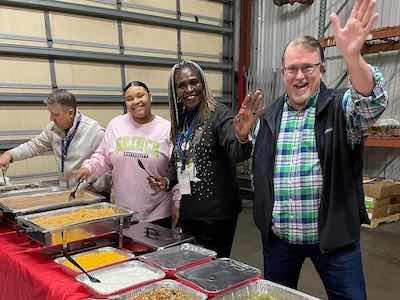 Nothing like a Texas barbecue from owner Jeff Fodge, right.Matt is a local legend around the Garland area, having been a star football player in high school and then earning a scholarship to be a punter at Oklahoma State, where he won the NCAA’s highest award for punters, the Ray Guy Award, named for the only punter elected to the NFL Hall of Fame.
Nothing like a Texas barbecue from owner Jeff Fodge, right.Matt is a local legend around the Garland area, having been a star football player in high school and then earning a scholarship to be a punter at Oklahoma State, where he won the NCAA’s highest award for punters, the Ray Guy Award, named for the only punter elected to the NFL Hall of Fame.
Matt was signed by the Dallas Cowboys as an undrafted free agent out of college in 2009 but didn’t make the team. He also played some for the Hamilton Tiger-Cats of the Canadian Football League before joining Gleco full-time to help run the family business.
“Coming from a sports background, I'm also very competitive,” he says. “My goal was to grow this company, start looking into culture, and get the right people for our company.”
Matt says that creating a culture at Gleco where employees feel connected to the company starts with building a future where growth is on a continuum, and employees know they play a big role in expanding the company’s sales and profitability.
In addition, he says the culture he hopes to solidify at Gleco is one where employees feel there is an opportunity for professional growth as the company maintains profitability and accelerates its quality programs with higher-level customers.
“We've got almost 160 employees and their families, and you could be talking about 500+ people that you have the opportunity to affect in a positive way. That's the way that we treat it, and that is how we'd like to move forward.”
“We have to grow and make sure that the umbrella that we're creating allows them to realize their dreams and aspirations out of life,” Matt says. We've started promoting from within and trying to figure out our people's skill sets and what they're good at. We want to show them a clear path to grow with the company and get their buy-in.
Both Fodges say that having almost 160 employees at both facilities isn’t just about looking at the employee; they say they look beyond that to the families in their communities connected to Gleco and want to ensure the company is around for many generations to come.
“That is the most rewarding part of this,” Matt says. “We've got almost 160 employees and their families, and you could be talking about 500+ people that you have the opportunity to affect in a positive way. “That's the way that we treat it, and that is how we'd like to move forward.”
Visit https://glecoplating.com.




































